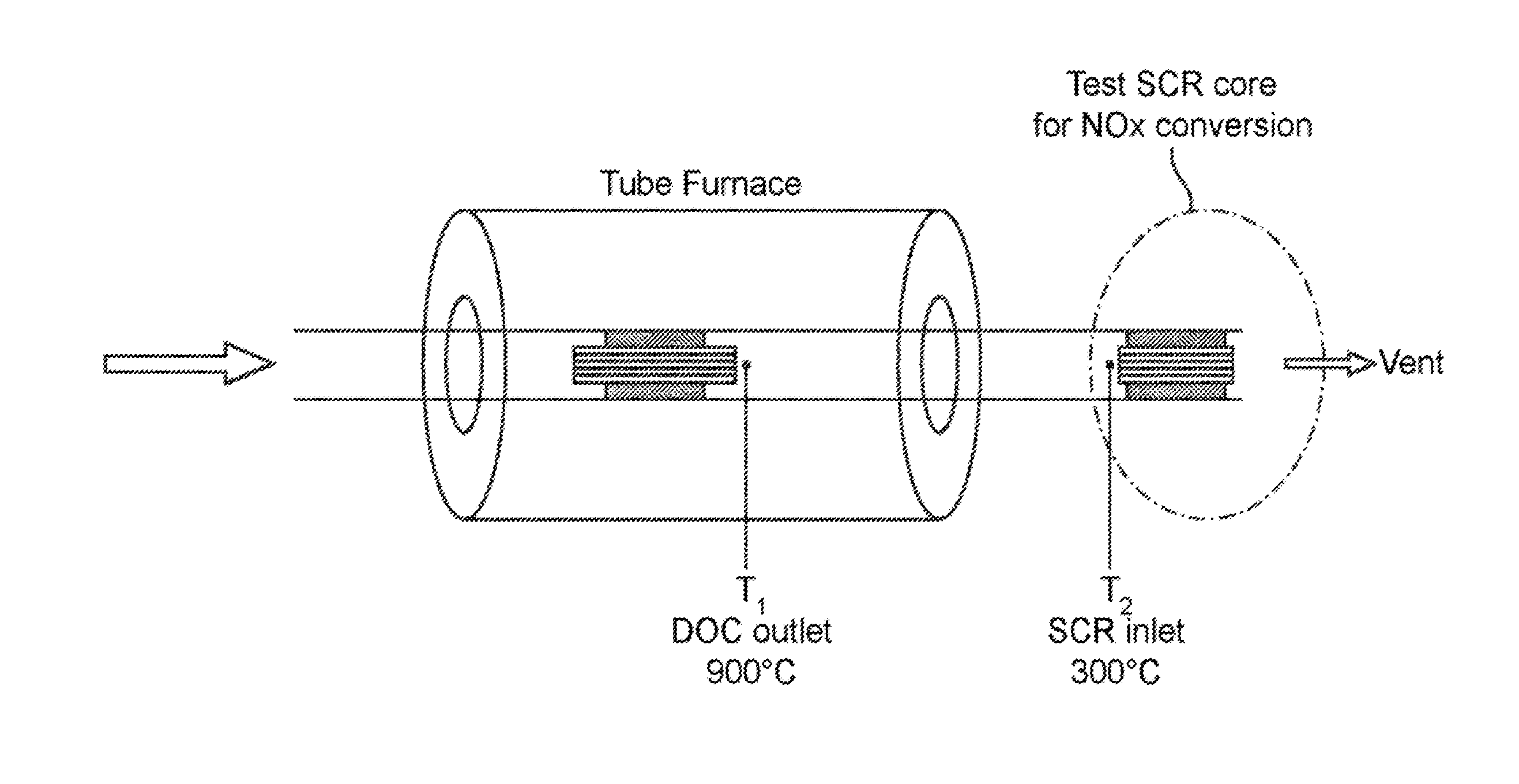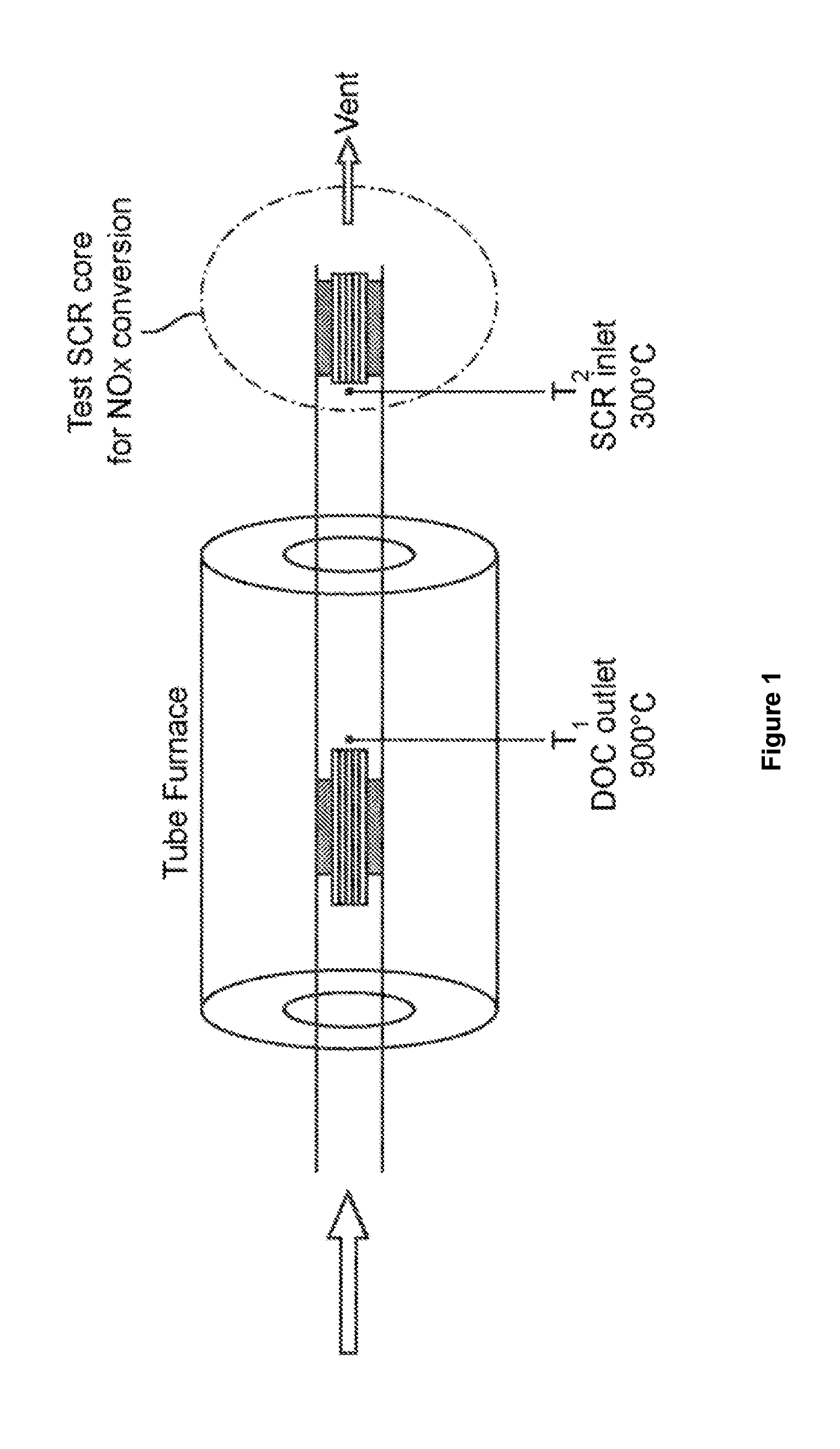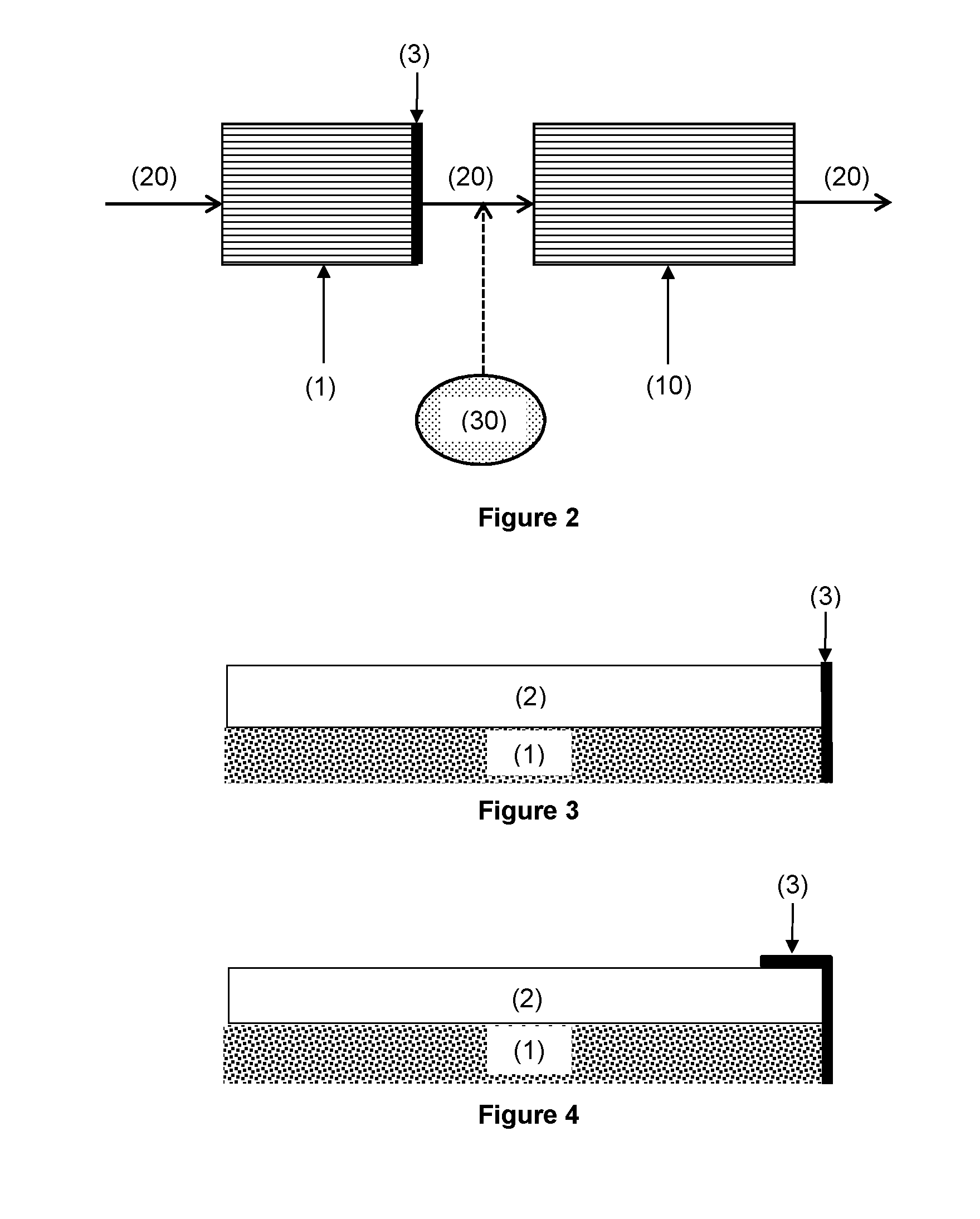Exhaust system for a compression ignition engine having a capture face for volatilised platinum
a technology of exhaust system and volatilised platinum, which is applied in the direction of physical/chemical process catalysts, metal/metal-oxide/metal-hydroxide catalysts, separation processes, etc., can solve the problems of negating the benefit of any pt, potentiation reduction in the performance of downstream devices, etc., and achieves the effect of reducing or preventing volatilised platinum and cost effectiv
- Summary
- Abstract
- Description
- Claims
- Application Information
AI Technical Summary
Benefits of technology
Problems solved by technology
Method used
Image
Examples
example 1
Preparation of Substrate Coated with 3 wt % Cu / CHA Zeolite
[0161]Commercially available aluminosilicate CHA zeolite was added to an aqueous solution of Cu(NO3)2 with stirring. The slurry was filtered, then washed and dried. The procedure can be repeated to achieve a desired metal loading. The final product was calcined. After mixing, binders and rheology modifiers were added to form a washcoat composition.
[0162]A 400 cpsi cordierite flow-through substrate monolith was coated with an aqueous slurry of the 3 wt % Cu / CHA zeolite sample using the method disclosed in WO 99 / 47260. This coated product (coated from one end only) is dried and then calcined and this process is repeated from the other end so that substantially the entire substrate monolith is coated, with a minor overlap in the axial direction at the join between the two coatings. The coated substrate monolith was aged in a furnace in air at 500° C. for 5 hours. A core of 1 inch (2.54 cm) diameter×3 inches long (7.62 cm) was cu...
example 2
[0163]Silica-alumina powder was slurried in water and milled to a d90<20 micron. Barium acetate was added to the slurry followed by appropriate amounts of soluble platinum and palladium salts. Beta zeolite was added and the slurry stirred to homogenise. The resulting washcoat was applied to the inlet channels of a cordierite flow through monolith having 400 cpsi using conventional coating techniques. The part was then dried.
[0164]A second slurry of silica-alumina was milled to a d90<20 micron. Soluble platinum salt was added and the mixture was stirred to homogenise. The slurry was applied to the outlet end of the substrate using established coating techniques. The part was then dried and calcined at 500° C.
[0165]The resulting catalyst had a total PGM loading of 150 g ft−3 and a Pt:Pd weight ratio of 3:1.
example 3
[0166]A catalyst was prepared according to Example 2. A further solution of Pd nitrate was impregnated onto the outlet face of the catalyst using an adsorbent polymer foam material that was saturated with the solution to achieve a coating depth of 5 mm. The amount of additional Pd applied to the outlet face of the catalyst was 0.29 g. This is equivalent to a loading of 101.6 g ft−3 in the 5 mm zone. The catalyst was dried and calcined at 500° C.
Experimental Results
System Tests
[0167]Tests were performed on a first synthetic catalytic activity test (SCAT) laboratory reactor illustrated in FIG. 1, in which an aged core of the coated Cu / CHA zeolite SCR catalyst of Example 1 was disposed in a conduit downstream of a catalyst core of Example 2 or Example 3. A synthetic gas mixture was passed through the conduit at a rate of 6 litres per minute. A furnace was used to heat (or “age”) the oxidation catalyst samples at steady-state temperature at a catalyst outlet temperature of 900° C. for 2...
PUM
| Property | Measurement | Unit |
|---|---|---|
| mean length | aaaaa | aaaaa |
| refractory | aaaaa | aaaaa |
Abstract
Description
Claims
Application Information
 Login to View More
Login to View More - R&D
- Intellectual Property
- Life Sciences
- Materials
- Tech Scout
- Unparalleled Data Quality
- Higher Quality Content
- 60% Fewer Hallucinations
Browse by: Latest US Patents, China's latest patents, Technical Efficacy Thesaurus, Application Domain, Technology Topic, Popular Technical Reports.
© 2025 PatSnap. All rights reserved.Legal|Privacy policy|Modern Slavery Act Transparency Statement|Sitemap|About US| Contact US: help@patsnap.com



